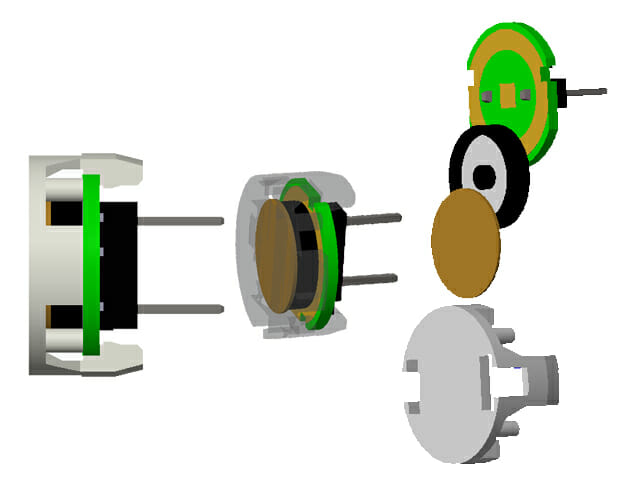
These different technologies of piezoelectric resonators will be described more precisely in this chapter. At the end of the 1990s, the maturity of and improvements in microelectronic technologies allowed for the integration of complex multilayer structures and MEMS, representing the third generation. Even if the principle was presented early, SAW filters have been serving the mobile phone market for 20 years, while the first commercial BAW filters, more precisely film bulk acoustic resonators (FBARs), were introduced in 2001. A few years later, at the end of 1976, a second generation with bulk acoustic wave (BAW) filters appeared, and it was first described by Yao and Young. The principle behind it was described for the first time in 1964 by Tehon and Wanuga. This peak describes the first generation of piezoelectric resonators or acoustic wave resonators, called surface acoustic wave (SAW) filters. The first peak was detected around 1970, with 1.4% of “RF_papers” dedicated to “piezoelectric” innovation. We noticed three periods of publications associated with three generations of RF filters or resonators. In this context, piezoelectric materials are unavoidable and are the best candidates to ensure a high‐quality transmission system.Įvolution of the ratio of “Piezo_papers” in “RF_papers” in percentage versus years. Examples of frequency bands that can be used in mobile radio communication systems are given in Table 1.

Consequently, some components will be able to be tuned dynamically to adapt to several frequency bands. Due to the limited available space inside mobile objects’ packages, it is impossible to integrate a transceiver for each frequency band. The latest generation of mobile phone can use more than 15 communication standards, distributed over about 10 frequency bands. Another important challenge is the ability to use multiple communication standards with one device. This is due to the limited number of frequency bands in the same area and consequently to the limited number of usable channels. The requirements to ensure no overlap from upstream and downstream bands for example are very difficult that without piezoelectric materials it is impossible to run an efficient filter and overall an efficient transmission system. Among these functions, one of the most critical is filtering. Such materials allow for the identification of various functions needed for the operation of devices those that require the use of piezoelectric materials include filters, duplexers, oscillators and in complement microelectromechanical systems (MEMS), switches and so on. A typical radio transceiver is presented in Figure 1. From a radio communication point of view, important devices require piezoelectric materials to reach their desired characteristics. Many functions use piezoelectric materials. In parallel, some of the objects listed above include functionalities in order to propose other services, such as positioning and movement detection, sometimes in complement with information coming from radio links. One of the main problems in ensuring high‐quality communication and guaranteeing high data flow is reducing or vanishing interferences between bands during the communication. Therefore, they are all made subject to environments where multiple communication standards, using different frequency bands, are available.

Most of these objects use multiband and multistandard in order to select the best transmission standard in accordance with their location.

In the future, an increasing number of apparatus will be connected - not only mobile objects but also stationary objects both at home and in the office. The market of connected mobile objects, such as smartphones, tablets, notebooks, printers and television sets, among others, is always growing. Radio frequency (RF) applications and challenges


 0 kommentar(er)
0 kommentar(er)
